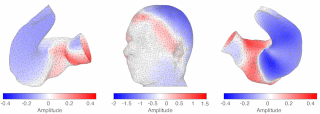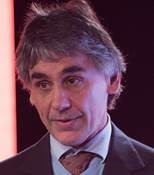
Kappel, Simon L. (2019-09-10). “Ear-EEG Forward Models: Improved Head-Models for Ear-EEG.” Frontiers in Neuroscience 13: 943. DOI:10.3389/ fnins.2019.00943. PMID 31551697. PMC: PMC6747017. ISSN 1662-453X.
 |
Claudio BabiloniWorking Group Leader Full Professor of Physiology |
 |
Fabrizio VecchioWorking Group Leader Researcher |
During the 31st International Congress of Clinical Neurophysiology (ICCN2018) in Washington DC (USA, May 4, 2018), a Special Interest Group of the International Federation of Clinical Neurophysiology discussed the main opportunities and controversies in the use of electroencephalographic/magnetoencephalographic techniques for the study of brain functional connectivity in Clinical Neurophysiology.
The Executive Committee of the International Federation of Clinical Neurophysiology (IFCN) has recently committed to Prof. Claudio Babiloni (Department of Physiology and Pharmacology of University of Rome “La Sapienza,” Italy) and Dr. Fabrizio Vecchio (IRCCS San Raffaele Pisana of Rome, Italy) to lead activities of a Special Interest Group (SIG) with more than 60 international experts for the development of standard operating procedures for the application of electroencephalographic/magnetoencephalographic (EEG/MEG) techniques of brain functional connectivity in Clinical Neurophysiology. These activities were discussed in the first in-person meeting of the SIG during the 31st International Congress of Clinical Neurophysiology (ICCN2018) held in Washington DC (USA, May 4, 2018).
Prof. Claudio Babiloni opened the meeting illustrating the main theoretical and methodological challenges in the use of EEG-MEG techniques for the study of functional brain connectivity as well as the general objectives of the SIG. The IFCN President, Prof. Mark Hallett (Human Motor Control Section, National Institute of Health, USA), illustrated the recent advancements and challenges in the use of those techniques for the study of corticomuscular connectivity in humans with tremor. Prof. Pedro Valdés-Sosa (Cuban Neurosciences Center of Havana, Cuba) clarified and discussed the most vivid disputes about the definition of brain functional connectivity estimated from EEG-MEG data, encouraging the use of EEG-MEG source estimation methods with explicit animal and human models of brain and electrophysiological signal generators. Prof. Mihaly Hajos (Translational Neuropharmacology, Yale School of Medicine, USA) overviewed procedures of brain network analysis of EEG and local potentials in rodents for the early stages of drug discovery for dementing and mental disorders. Prof. Stefan Rampp (Department of Neurology, University of Erlangen, Germany) overviewed procedures of EEG source connectivity for the localization of seizure generators in epileptic patients. Dr. Francesca Miraglia provided an update on the application of Graph Theory to the modeling of the topology of brain functional connectivity in dementia.
During the general discussion, Prof. Mark Hallett emphasized field opportunities associated with the intent of the National Institute of Health to invest in the understanding of functional brain networks at both preclinical and clinical levels. Prof. Paolo M. Rossini (Neurology Institute, Catholic University of Rome, Italy) emphasized the lack of an international expert consensus about standard operating procedures for the application of EEG-MEG functional connectivity techniques as the main reason of their limited use in the main international projects and pharmacological clinical trials. In this line, Prof. Claudio Babiloni and Margitta Seeck proposed an initiative to tackle this issue using EEG-MEG data collected in epileptic patients before the surgical treatment of seizure sources untreatable pharmacologically. In the proposed design, the localization of the seizure may represent the golden reference for the estimation of localization accuracy of EEG-MEG source connectivity techniques. Prof. Pedro Valdés Sosa emphasized the need for standardized validation protocols using multimodal approaches based on simultaneous scalp EEG-fMRI or scalp-intracranial EEG recordings. Prof. Peter Fuhr (Neurology Institute, University of Basel, Switzerland) underlined the issue of reliability of EEG-MEG source connectivity measures, proposing another initiative focused on repeated measurements of EEG-MEG data in healthy volunteers. Finally, Dr. Fabrizio Vecchio summarized the priorities and next steps of the Group initiatives.
Please see the presentation slides from this meeting.
Please review the agenda.